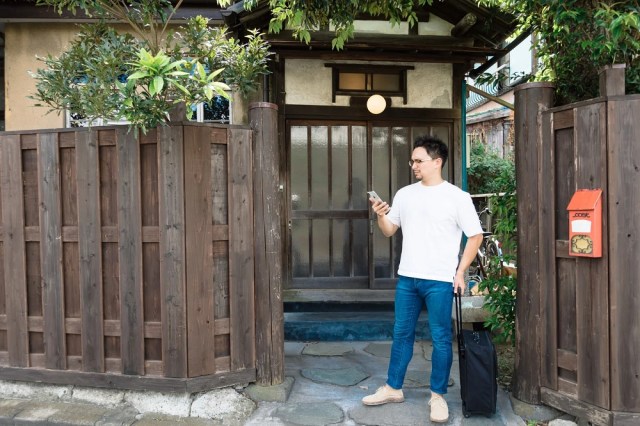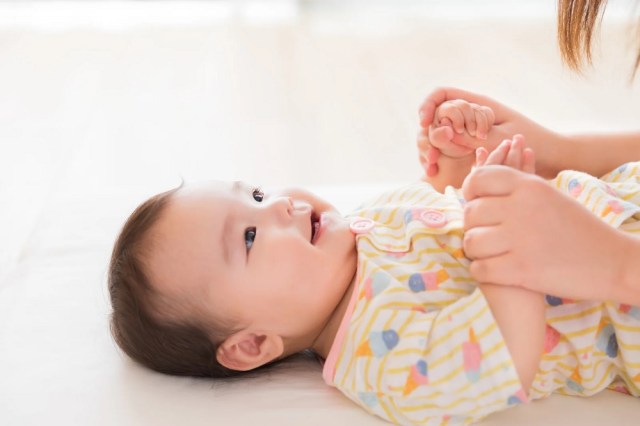
Study shows fewer Japanese living in each and every prefecture, opposite for foreign resident number.
This week, the Japanese government’s Ministry of Internal Affairs and Communications released the results of a nationwide population study, based on an examination of residency registrations from across the country as of January 1. It wasn’t a shock to hear the researchers say that Japan’s population is shrinking, but what was surprising was how widespread the decline in the number of Japanese people in Japan has become, as well as the breadth of the increase in the foreign population.
For the first time ever since such records began being kept in 1968, the number of Japanese citizens living in each and every one of Japan’s 47 prefectures dropped. This was the second year in a row for the phenomenon to occur in Tokyo and the first for Okinawa, which has traditionally had one of the highest, if not the highest, birth rate in the country. The Japanese citizen population of Japan fell by roughly 800,000 people last year, representing a 0.65-percent decrease, both of which are the largest such figures since the annual study was first conducted. The numbers of Japanese births and deaths were also the lowest and highest, respectively, since the start of record-keeping for those categories in 1979, the ministry says.
▼ Not so many of these guys these days.
Meanwhile, there was an increase in the number of foreign residents in Japan in every prefecture. The first increase since 2019 brought the number of foreign residents living in Japan up to just under three million, with the largest proportion of the 2,993,839 people living in Tokyo (581,112 foreign residents) followed by Osaka Prefecture (24,963) and Aichi Prefecture (19,326), which includes Nagoya, in distant second and third. Breaking the data down into even smaller demographics showed that 85.8 percent of the 1,747 towns in Japan experienced growth in their foreign resident population.
As with any recent social statistics, the impact of the coronavirus pandemic can’t be ignored. Japan’s already low birth rate dipped even lower during the pandemic, with prospective parents uneasy about the prospect of bringing a baby into the world in such an unsure health and economic situation, and with masking still relatively common in Japan, those wanting to start a family may still be postponing such plans. At the same time, it hasn’t been all that long since the strict pandemic-related difficulties in obtaining work or study visas for foreigners wanting to live in Japan were removed, and pent-up demand has likely been causing an especially strong surge in the number of people moving to the country, especially with the weak yen making it more affordable to use one’s home-country savings to set up a new life in Japan.
That said, the trends of a shrinking Japanese population and an increasing foreign one were already present before the pandemic started, so that being the case across all of the country’s prefectures may be something we’ll continue seeing for some time to come.
Source: NHK News Web, Nihon Keizai Shimbun
Top image: Pakutaso
Insert image: Pakutaso
● Want to hear about SoraNews24’s latest articles as soon as they’re published? Follow us on Facebook and Twitter!


 The Tokyo area welcomed more new foreign residents than Japanese ones last year
The Tokyo area welcomed more new foreign residents than Japanese ones last year Fewer Japanese people got married last year than any time since the end of World War II
Fewer Japanese people got married last year than any time since the end of World War II Japan reports fewer children and more elderly people for 35th year in a row
Japan reports fewer children and more elderly people for 35th year in a row Tokyo experiences drop in population for seventh consecutive month
Tokyo experiences drop in population for seventh consecutive month The number of elderly people in Japan this year has yet again smashed multiple records
The number of elderly people in Japan this year has yet again smashed multiple records Foreigner’s request for help in Tokyo makes us sad for the state of society
Foreigner’s request for help in Tokyo makes us sad for the state of society Japanese city loses residents’ personal data, which was on paper being transported on a windy day
Japanese city loses residents’ personal data, which was on paper being transported on a windy day Should you add tartar sauce to Japanese curry rice? CoCo Ichi makes diners an unusual offer
Should you add tartar sauce to Japanese curry rice? CoCo Ichi makes diners an unusual offer Seaside scenery, history, and so many desserts on Yokohama’s Akai Kutsu【Japan Loop Buses】
Seaside scenery, history, and so many desserts on Yokohama’s Akai Kutsu【Japan Loop Buses】 Historical figures get manga makeovers from artists of Spy x Family, My Hero Academia and more
Historical figures get manga makeovers from artists of Spy x Family, My Hero Academia and more Red light district sushi restaurant in Tokyo shows us just how wrong we were about it
Red light district sushi restaurant in Tokyo shows us just how wrong we were about it 11 different ways to say “father” in Japanese
11 different ways to say “father” in Japanese McDonald’s new Happy Meals offer up cute and practical Sanrio lifestyle goods
McDonald’s new Happy Meals offer up cute and practical Sanrio lifestyle goods Akihabara pop-up shop sells goods made by Japanese prison inmates
Akihabara pop-up shop sells goods made by Japanese prison inmates French Fries Bread in Tokyo’s Shibuya becomes a hit on social media
French Fries Bread in Tokyo’s Shibuya becomes a hit on social media Japanese ramen restaurants under pressure from new yen banknotes
Japanese ramen restaurants under pressure from new yen banknotes Studio Ghibli releases new action figures featuring Nausicaä of the Valley of the Wind characters
Studio Ghibli releases new action figures featuring Nausicaä of the Valley of the Wind characters New private rooms on Tokaido Shinkansen change the way we travel from Tokyo to Kyoto
New private rooms on Tokaido Shinkansen change the way we travel from Tokyo to Kyoto Tokyo Tsukiji fish market site to be redeveloped with 50,000-seat stadium, hotel, shopping center
Tokyo Tsukiji fish market site to be redeveloped with 50,000-seat stadium, hotel, shopping center All-you-can-drink Starbucks and amazing views part of Tokyo’s new 170 meter-high sky lounge
All-you-can-drink Starbucks and amazing views part of Tokyo’s new 170 meter-high sky lounge Beautiful Ghibli sealing wax kits let you create accessories and elegant letter decorations【Pics】
Beautiful Ghibli sealing wax kits let you create accessories and elegant letter decorations【Pics】 Studio Ghibli releases Kiki’s Delivery Service chocolate cake pouches in Japan
Studio Ghibli releases Kiki’s Delivery Service chocolate cake pouches in Japan New definition of “Japanese whiskey” goes into effect to prevent fakes from fooling overseas buyers
New definition of “Japanese whiskey” goes into effect to prevent fakes from fooling overseas buyers Our Japanese reporter visits Costco in the U.S., finds super American and very Japanese things
Our Japanese reporter visits Costco in the U.S., finds super American and very Japanese things Studio Ghibli unveils Mother’s Day gift set that captures the love in My Neighbour Totoro
Studio Ghibli unveils Mother’s Day gift set that captures the love in My Neighbour Totoro More foreign tourists than ever before in history visited Japan last month
More foreign tourists than ever before in history visited Japan last month New Pokémon cakes let you eat your way through Pikachu and all the Eevee evolutions
New Pokémon cakes let you eat your way through Pikachu and all the Eevee evolutions Sales of Japan’s most convenient train ticket/shopping payment cards suspended indefinitely
Sales of Japan’s most convenient train ticket/shopping payment cards suspended indefinitely Sold-out Studio Ghibli desktop humidifiers are back so Totoro can help you through the dry season
Sold-out Studio Ghibli desktop humidifiers are back so Totoro can help you through the dry season Japanese government to make first change to romanization spelling rules since the 1950s
Japanese government to make first change to romanization spelling rules since the 1950s Ghibli founders Toshio Suzuki and Hayao Miyazaki contribute to Japanese whisky Totoro label design
Ghibli founders Toshio Suzuki and Hayao Miyazaki contribute to Japanese whisky Totoro label design Doraemon found buried at sea as scene from 1993 anime becomes real life【Photos】
Doraemon found buried at sea as scene from 1993 anime becomes real life【Photos】 Tokyo’s most famous Starbucks is closed
Tokyo’s most famous Starbucks is closed One Piece characters’ nationalities revealed, but fans have mixed opinions
One Piece characters’ nationalities revealed, but fans have mixed opinions We asked a Uniqlo employee what four things we should buy and their suggestions didn’t disappoint
We asked a Uniqlo employee what four things we should buy and their suggestions didn’t disappoint Princesses, fruits, and blacksmiths: Study reveals the 30 most unusual family names in Japan
Princesses, fruits, and blacksmiths: Study reveals the 30 most unusual family names in Japan Rate of young Japanese people who want to get married someday drops to lowest ever in survey
Rate of young Japanese people who want to get married someday drops to lowest ever in survey Japan’s suicide number drops for eighth straight year, rises among teens
Japan’s suicide number drops for eighth straight year, rises among teens Daily horde of commuters into Tokyo is larger than one of history’s fiercest conquering armies
Daily horde of commuters into Tokyo is larger than one of history’s fiercest conquering armies Ministry of Health, Labor, and Welfare reveals the five prefectures with highest divorce rates
Ministry of Health, Labor, and Welfare reveals the five prefectures with highest divorce rates The number of doctorate students in Japan is now almost half of what it was 17 years ago
The number of doctorate students in Japan is now almost half of what it was 17 years ago Japan increases entry limits, offers extra financial aid for foreign students
Japan increases entry limits, offers extra financial aid for foreign students 6 surprising things about having a baby in Japan
6 surprising things about having a baby in Japan Japanese Self-Defense Force mulls removing its ban on tattoos
Japanese Self-Defense Force mulls removing its ban on tattoos One in four young people in Japan’s biggest cities thinking of moving to the countryside【Survey】
One in four young people in Japan’s biggest cities thinking of moving to the countryside【Survey】 Japanese prefectural governor wants foreign tourists to pay special extra fee
Japanese prefectural governor wants foreign tourists to pay special extra fee Ridesharing services legalized for Tokyo and Kyoto, but does this change anything?
Ridesharing services legalized for Tokyo and Kyoto, but does this change anything? Japanese politicians want to make it easier for foreigners to get anime assistant work visas
Japanese politicians want to make it easier for foreigners to get anime assistant work visas Population aging in Japan gets a corona-boost as pregnancies drop by 11 percent this year
Population aging in Japan gets a corona-boost as pregnancies drop by 11 percent this year Japanese government’s new birth rate plan: Use AI to tell people who’d be a good spouse for them
Japanese government’s new birth rate plan: Use AI to tell people who’d be a good spouse for them Japan suffers 37th consecutive year of low birthrate, Japanese people may become extinct someday
Japan suffers 37th consecutive year of low birthrate, Japanese people may become extinct someday Japan now has over 40,000 foreign convenience store clerks as it continues to internationalize
Japan now has over 40,000 foreign convenience store clerks as it continues to internationalize
Leave a Reply